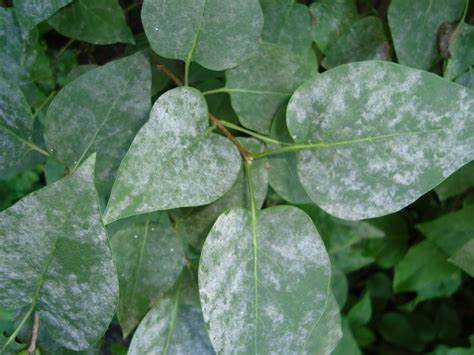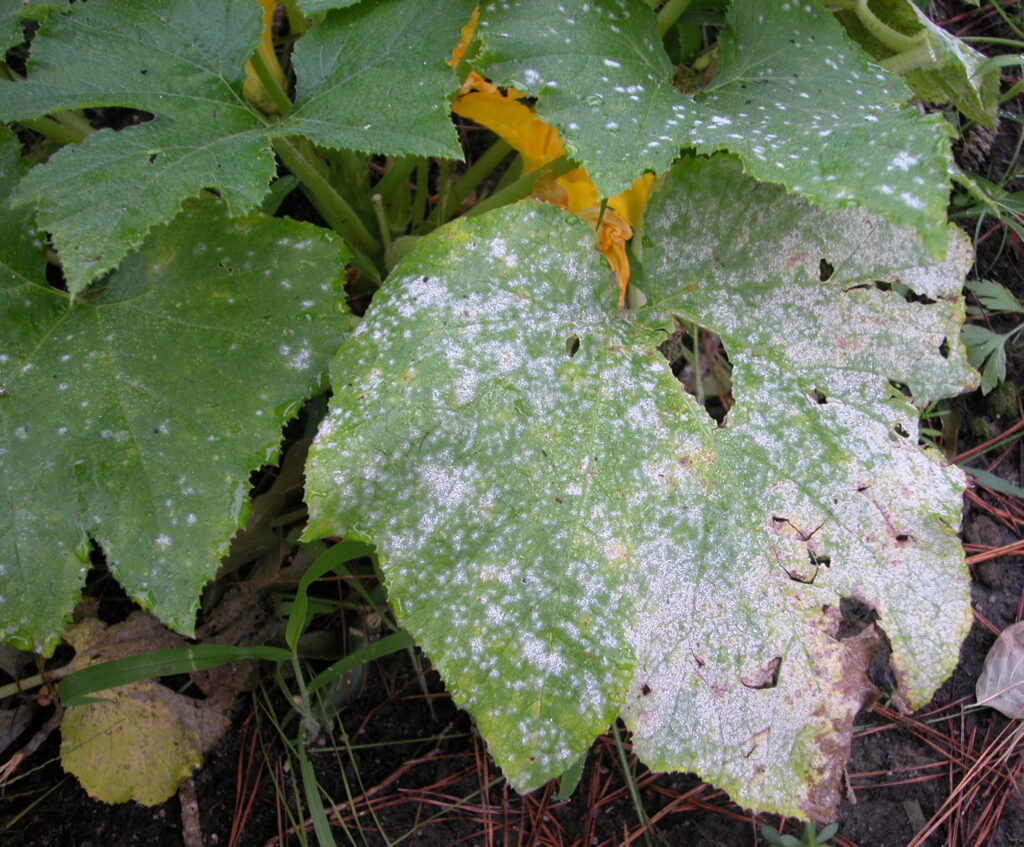Last week I mentioned powdery mildew which was on point since quite a few people brought in and sent pictures of this fungus. Let’s go into a little more depth about this topic. The fungus gets into the leaf tissue and sends up fruiting structures which look like talcum powder on the leaves. This disease is plant specific meaning that the powdery mildew on the lilacs does not infect garden vegetables. Powdery mildew on phlox will not spread to other flowers.

If you find this talcum-like fungus on trees and shrubs do not worry this late in the season. It will not harm these woody plants except for ever-blooming roses. If it is on cucumbers and they are still in their prime bearing mode or winter and summer squash, I recommend treating these plants.

Use a garden fungicide like Daconil or a sulfur-based fungicide if you can find it to protect the leaves that are not infected. Sulfur is good because it is volatile and will get underneath the leaves. Some horticultural oils and even a 10% milk solution help coat the leaves protecting them from infection. Even washing the leaves helps reduce the spore amount. For roses and flowers, I would use a garden fungicide this late in the season to protect the unaffected leaves.
Some squash leaves have a natural variation of mottled light green of their leaves. This is natural and not a disease.

Powdery mildew has not been a problem for the last couple of years because it was hotter and dryer. This year is different with the rainfall and cooler night temperatures which is the perfect conditions for spreading the disease.
